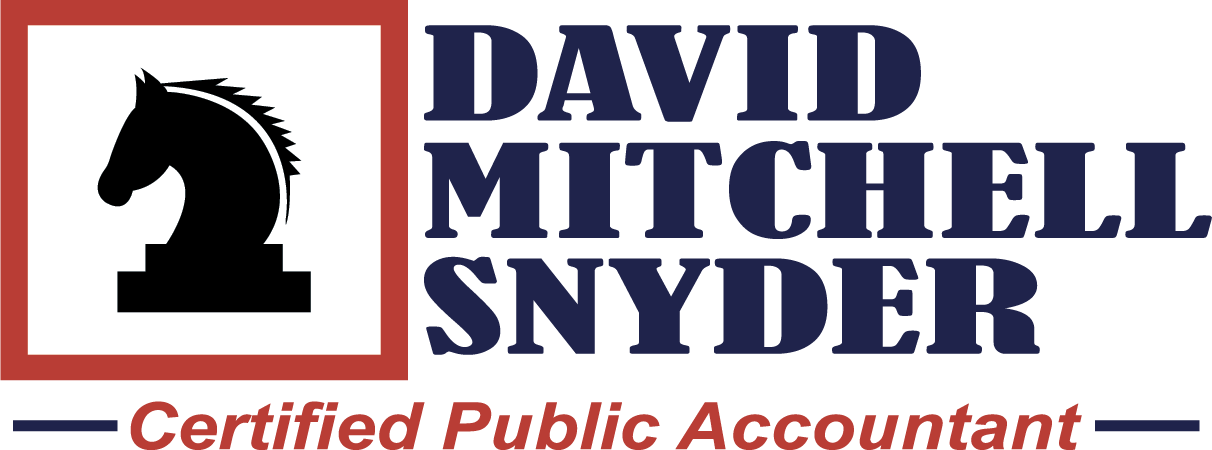Retirement Planning

Retirement Planning
PART 1: WHERE & WHEN TO INVEST
What accounts are best to use to save for retirement?
I advise my tax and financial planning clients to have the following three types of accounts:
- Traditional retirement accounts
- ROTH retirement accounts
- Outside of retirement accounts
This allows us to reap the benefits of planning distributions in the most tax efficient manner possible. My number one rule in saving for retirement is: save money for retirement in all three types of accounts.
Is there a better time to contribute to each of the three different types accounts?
Good question! Yes, there is. I elaborate on this in the following paragraphs.
When you are in the part of your career that your tax bracket is low, you should invest in ROTH type retirement accounts. This is generally between the ages of 20 to 40 or for a few years after starting a business or changing careers.
When you are in your highest tax bracket years during your earning career, you should invest in traditional retirement accounts if you get to shield the contributions from current taxation. This is usually from between the ages of 40 and 60. If during this time you quit your job to start a business or start over in another field, you will probably have a low tax bracket for a few years and therefore switch back to the ROTH type accounts.
In addition to your retirement savings, during your earning years, plan to save 10% of your earnings in non-tax deferred accounts.
PART 2: THE BEST INVESTMENTS FOR EACH TYPE OF ACCOUNT
Did you know that certain investments are better in your ROTH versus in a traditional or non-retirement account?
Many people don’t know the financial loss they suffer by putting the wrong investments in the each of the three types of accounts commonly used to save for retirement.
ROTH type accounts should be invested in assets with high income potential. These assets include real estate, REITS, high-yield bonds and high dividend and growth stocks. Assets with high income payouts and actively traded accounts that will produce short term gains are suitable for ROTH accounts.
Traditional retirement accounts should hold income generating assets. These are assets that earn ordinary income like bonds, REITS and bond funds. Invest in assets like the ROTH suggestions above.
Non-retirement accounts should invest in high growth stocks that don’t pay dividends, index funds, ETFs and real estate. Assets that generate preferentially taxed income like tax-free interest, qualified dividends or long-term capital gains are excellent investments to hold in your non-retirement accounts. A buy and hold philosophy works better in these types of accounts.
Overall, collectively the three different accounts should be diversified.
PART 3: RETIREMENT DISTRIBUTION STRATEGIES
So, you finally retired? Congratulations! Now you can start worrying about the possibility of running out of money. I can’t put more money in your retirement accounts, but I can show you how to get the most out of the money you do have. Follow the strategies below to maximize your retirement money and minimize the taxes you pay.
- Hold off receiving your Social Security until age 70. Each year from age 62 to age 70 that you delay taking Social Security, your monthly amount increases approximately by 8%. Up to 85% of your Social Security can be taxable. The amount is based on your filing status and Modified Adjusted Gross Income. So, waiting until you (and your spouse) don’t have W-2 or other earned income will allow more of your Social Security income to escape taxation. Less tax, more for you, a true win-win.
- Traditional advice is to take withdrawals from taxable accounts first to allow for your tax deferred accounts to grow. However, a savvier move is to take your taxable withdrawals that don’t cause your tax rate to increase. If you need additional funds, take them from your ROTH accounts.
- Each year assess the amount of your capital gain and qualified dividend income. There is a separate (more beneficial) tax rate structure for these items. Especially in years with high capital gains/qualified dividend income employ strategic planning to avoid increasing the tax rate on these preferentially taxed items.
This is why its so important to have money in traditional and ROTH retirement accounts as well as savings in regular taxable accounts held outside of any qualified retirement plans. This setup will provide you and your tax advisor maximum flexibility in structuring the most beneficial (less taxed, more in your pocket) retirement distributions for you.
